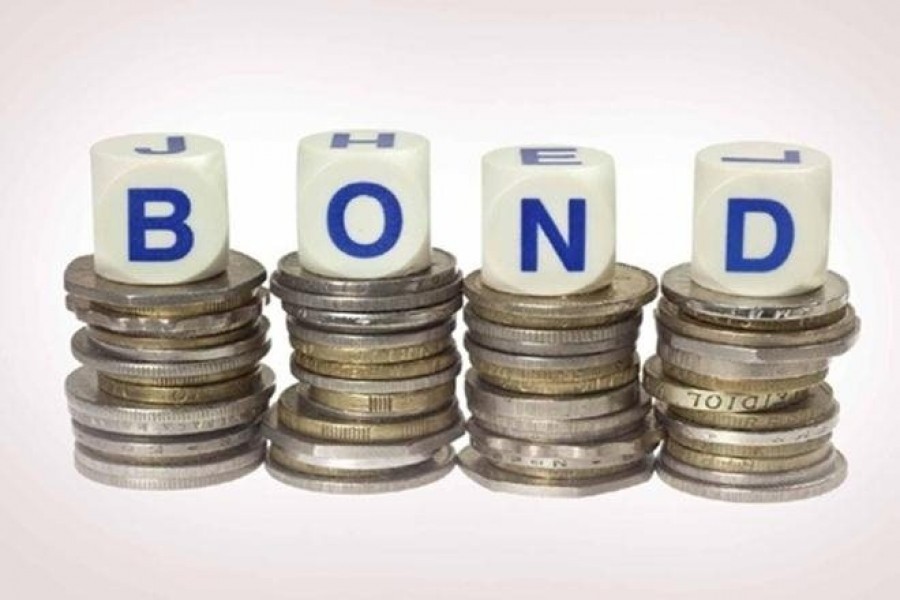Bond price and interest on bond are negatively related. Understanding this relationship is important to understanding how the central bank conducts monetary policy to influence money supply, interest rate on savings deposits, lending, and so on. Generally, the interest rate on bonds is almost always positive but there can be atypical situation when that rate turns negative. This piece explains these issues at a basic level for non-economists interested to improve their economic literacy.
When people or institutions invest their surplus funds in corporate or government bonds, they are essentially lending their money to bond issuers. In return, the investors by contract are paid fixed interest until the maturity (redemption) of the bond and also are repaid the face value (a.k.a. par value) upon maturity. The interest investors earn is called interest yield or simply yield.
A bond (a.k.a. debt instrument) is an 'I owe you certificate' with a face value and an annual interest payment (yield), both of which are fixed. The purchase price of the bond, however, depends on the supply and demand in the bond market. The purchase price could be the face value ($1000) or any price above or below at the time of purchase.
Consider three scenarios using a one-year maturity bond with purchase price of $1000 (equal to face value) and annual yield $100. (1) interest rate on the investment is 10 per cent (100/1000); (2) if the purchase price decreases to $950, interest rate on the investment will be 10.5 per cent (100/950); (3) if the market price increases to $1050, interest yield will be 9.5 per cent (100/1050). This example show - given coupon payment is fixed - how bond price and interest rate are negatively related. This relationship facilities central bank's conduct of monetary policy through Repo and Reverse Repo.
Obviously, as we see, the interest rate calculated above is positive and that is the normal outcome of investing in bonds. But there can be atypical situations where the yield turns to be negative. This negative yield phenomenon, of late, has become a tool of much interest to monetary policy makers in advanced economies where economic growth is anemic or even stagnating.
Apparently, negative yield means the bond holders lose money on the investment, an unusual incidence, notwithstanding. Whether a bond has a negative yield largely depends on the type of yield being calculated. Depending on the purposes of the calculation, a bond's yield can be determined using the current yield or yield-to-maturity (YTM) formulas.
The current yield of a bond is simply the amount of interest paid annually relative to the bond purchase price. It is obtained by simply dividing the annual coupon payment (annual interest received) by the bond's purchase price. For example, assume a bond with a face value of $1,000 and a coupon rate (interest rate) of 8 per cent (hence, annual return =0.08 x 1000 = $80). Suppose you purchased a $1000 par value bond for $800 at current market price. That promises you an annual interest income of $80. The current yield or return on your investment of $800 is 10 per cent (current yield = 80/800 = 0.10). The current yield as computed cannot be negative even if the bond price is well above the face value or the interest rate is zero. For a bond to have a negative current yield, it must pay negative interest or negative price, both of which are unreal.
Whilst current yield of a bond is impossible to be negative, yield to maturity (YTM) can be negative. The YTM calculates the bond's return (expressed as an annual percentage), if investors were to hold the bond until maturity. The formula to compute YTM considers all the interest payments and the face value on the bond (assuming no principal defaults), and the purchase price is deemed to be a completer and more complex. Let us work out an example:
Suppose an investor pays $800 for a bond with two years to maturity, a face value of $1,000 and interest payments of $8 per year. Using the bond table, the YTM is 10.86 per cent. Note that bond price fluctuates depending on supply and demand, but the face value is fixed at $1000. So, if the bond's purchase price is $1,200, the YTM would be about -9.41 per cent. However, it must be noted that this does not mean that the bond yield is negative, it simply shows that bond holder suffers a capital loss merely because the investor purchased the bond well above the face value and the interest earned could not offset the loss.
For day to day practical purposes, all that the readers need to understand and remember is that bond prices and interest rates move in opposite direction - an inverse relationship.
Abdullah A Dewan, formerly a physicist and a nuclear engineer at BAEC, is
professor of Economics at Eastern
Michigan University, USA.


